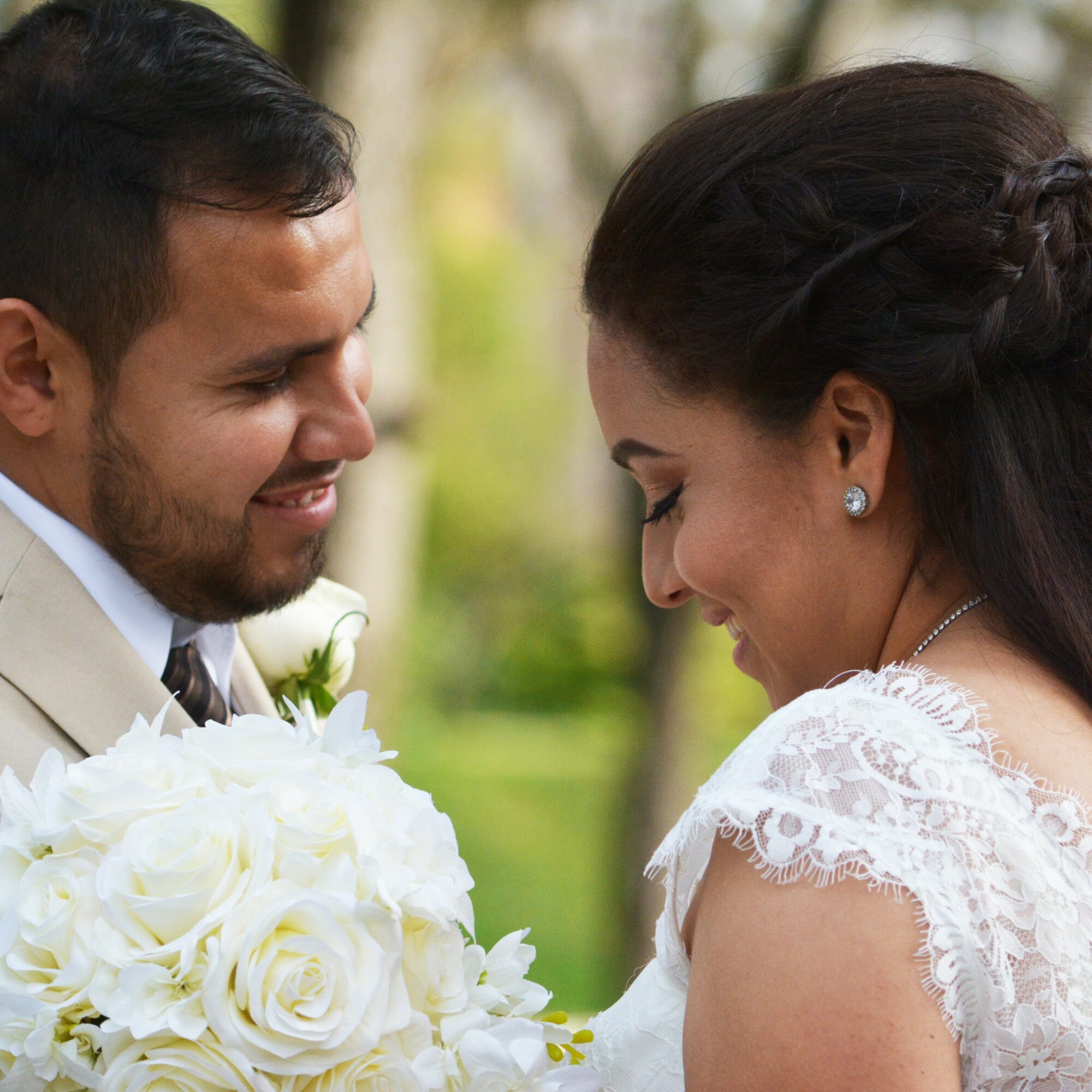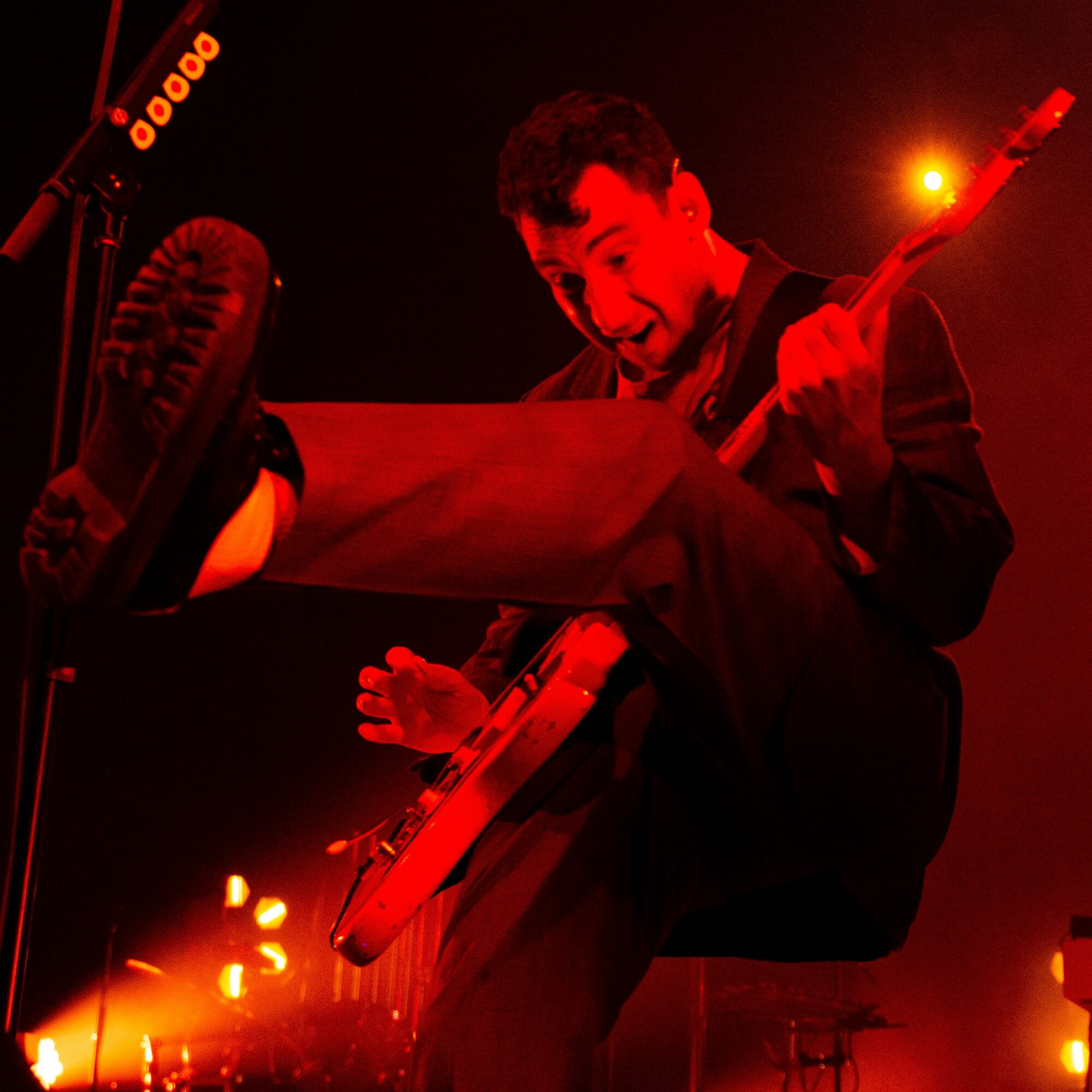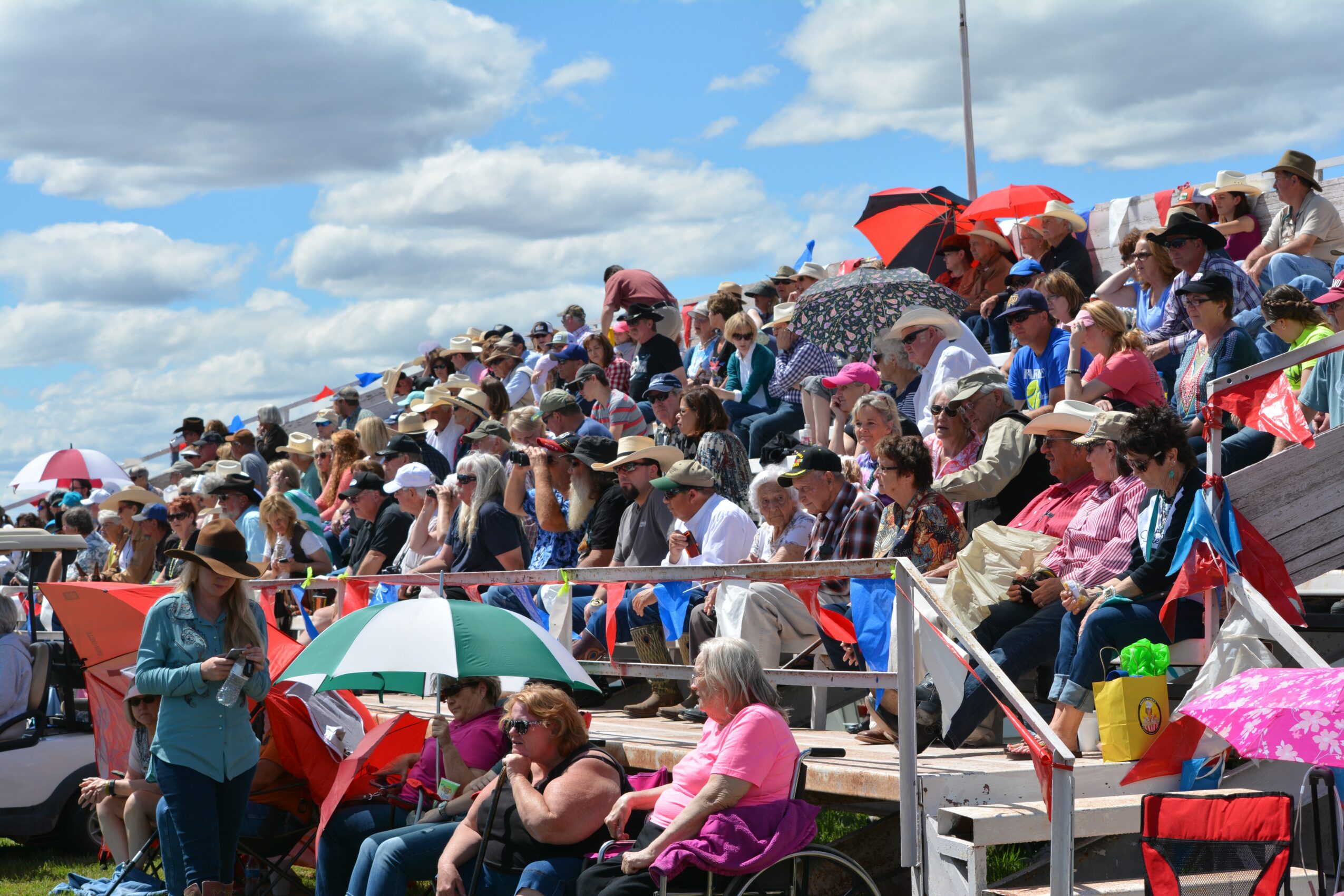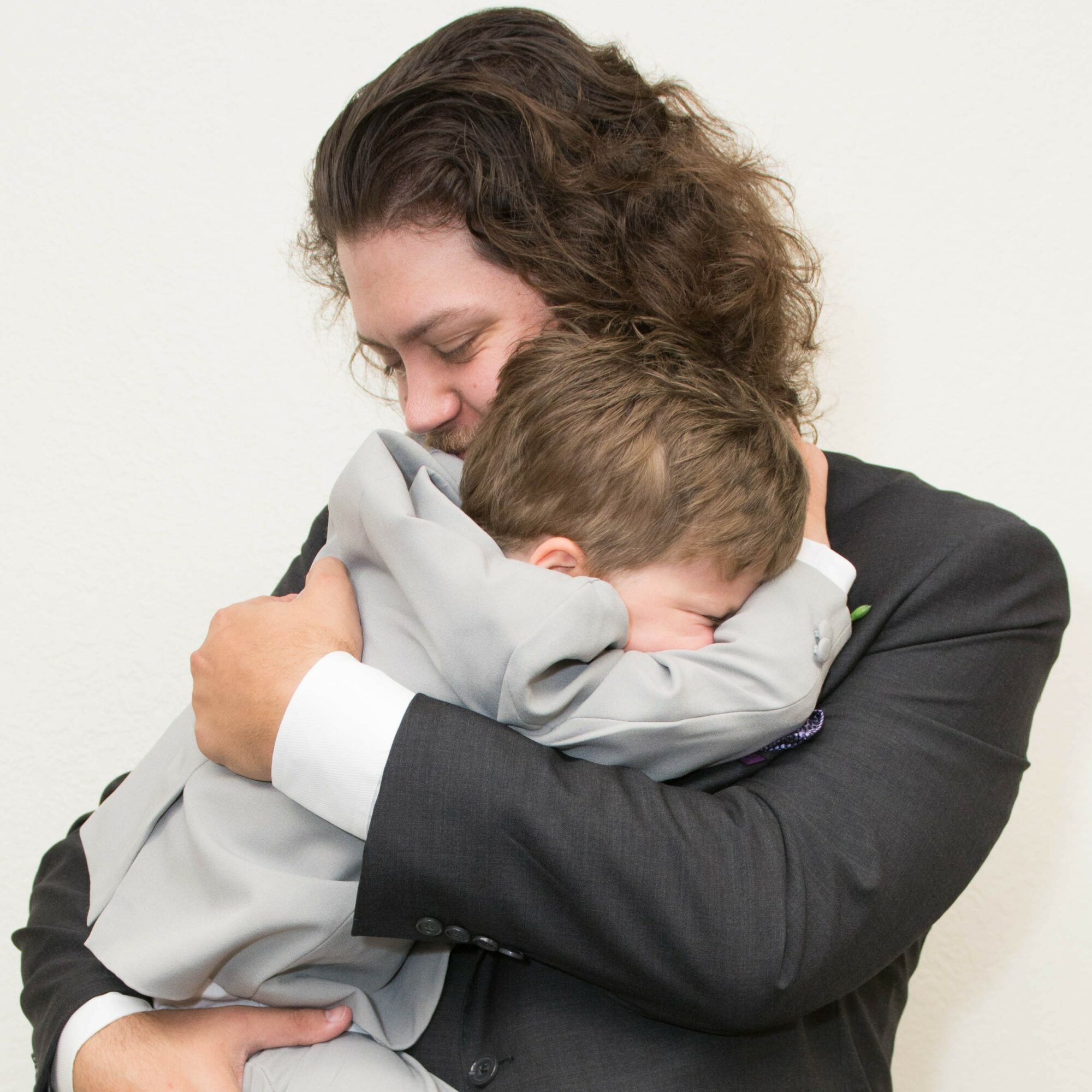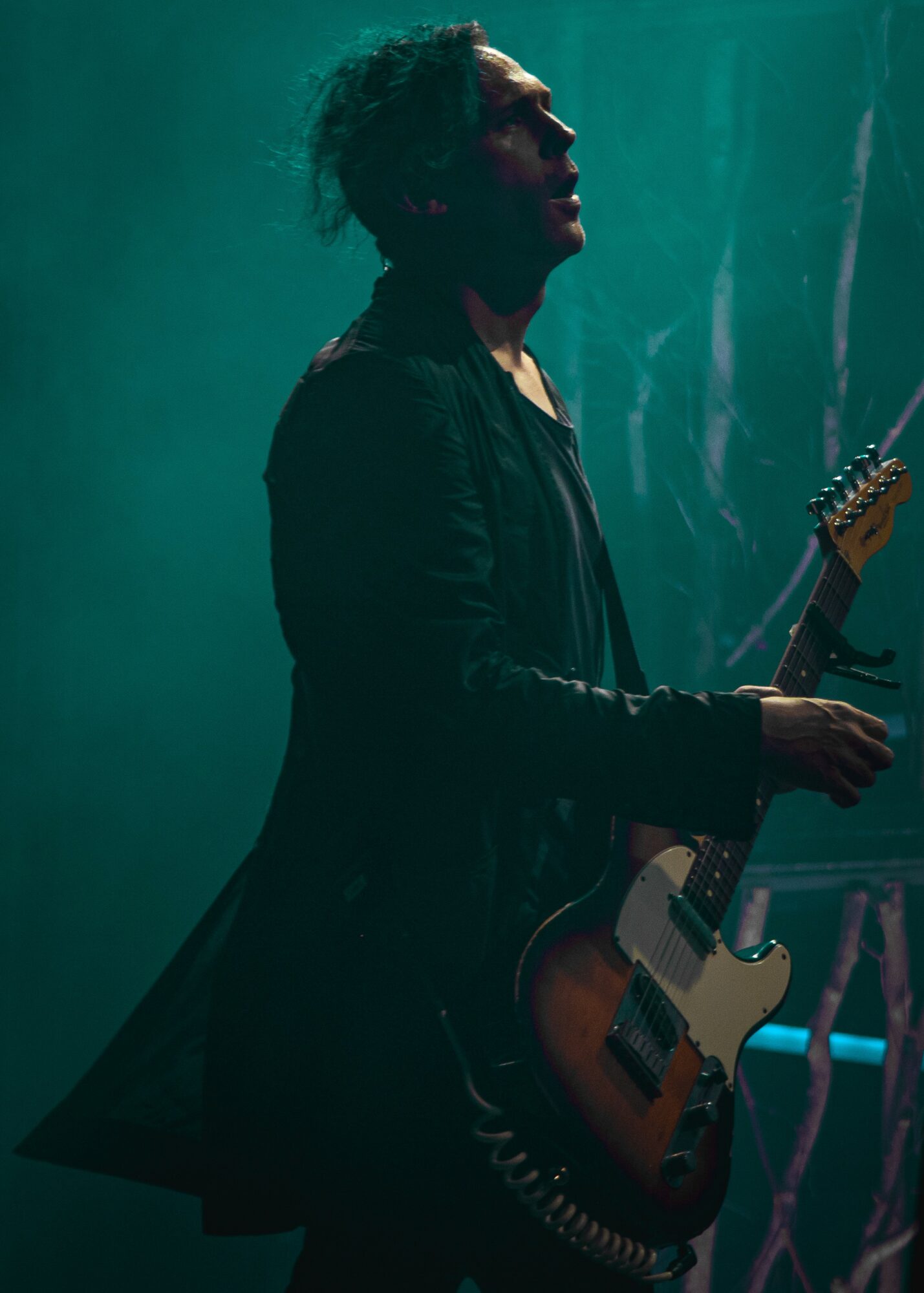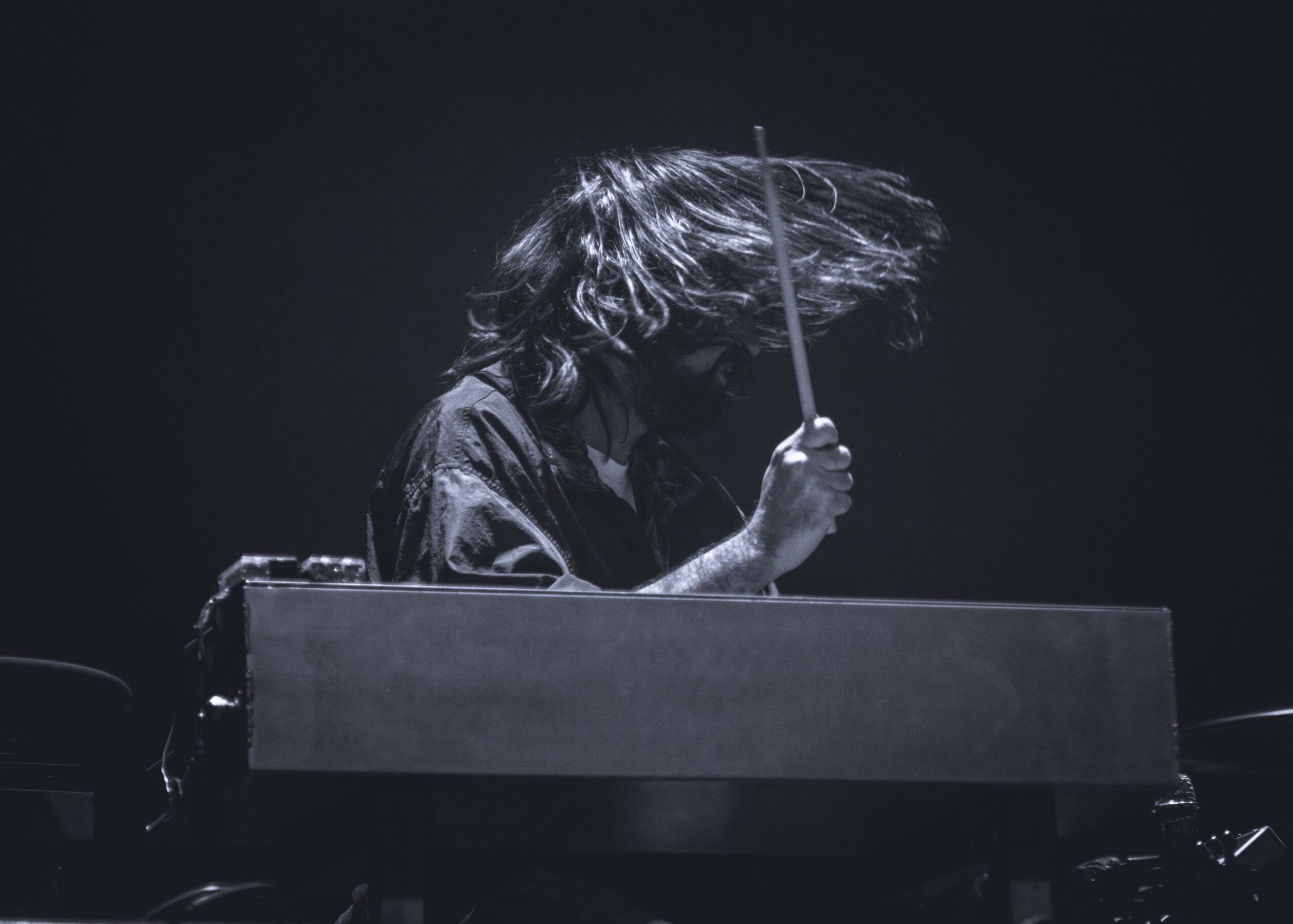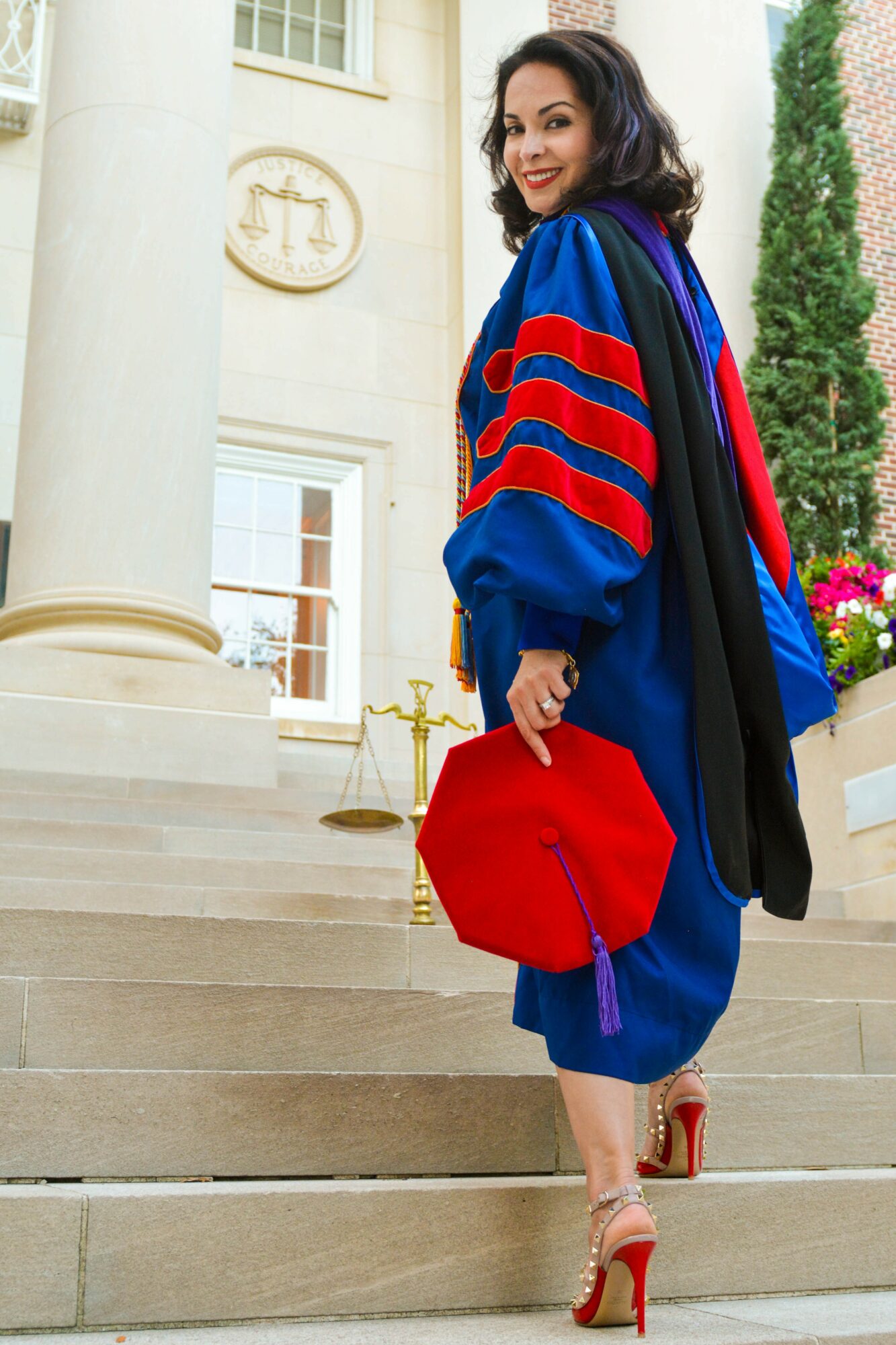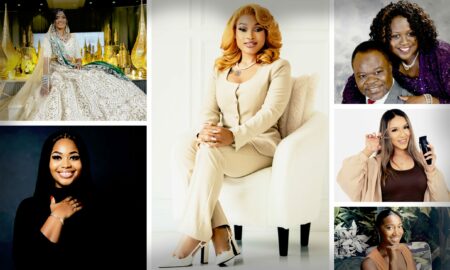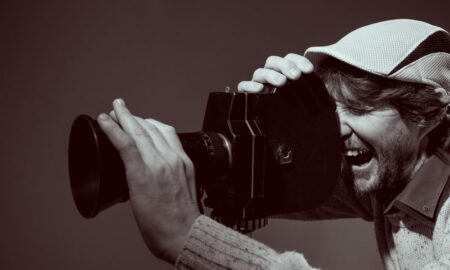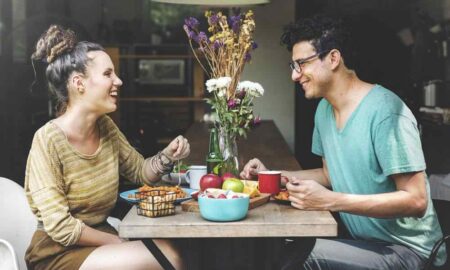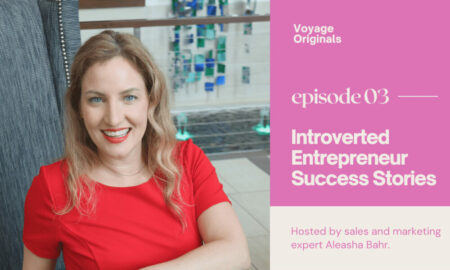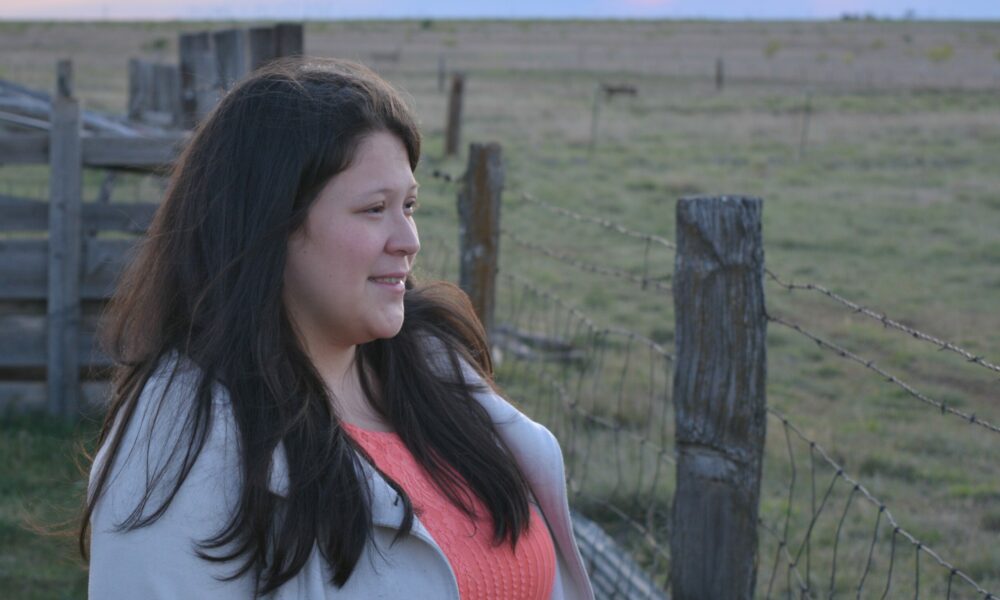

Today we’d like to introduce you to Amparo Jordan.
Hi Amparo, thanks for sharing your story with us. To start, maybe you can tell our readers some of your backstories.
Hello, I became familiar with photography as a 5-year-old, when my grandmother would hand me the camera and ask me to take a picture of her when she had dressed up for a nice event. Weeks later, when she received the developed film, she would walk me through why each photo wasn’t workable. At first it was my finger covering the lens, or the flash, or not leveling the photo. Eventually, I learned to take a decent shot. In 1993 we could barely afford a film camera. So, it was understandable why my grandmother wavered on trusting her hyper granddaughter with a disposable. But thankfully she trusted me, a little.
Over the years, as she purchased newer and more advanced cameras, she would allow me to tinker with her older, less fragile, and outdated equipment. Everything from the Kodak Instamatic with the rotating MagicCube Flash Cartridge and 110 Film, to the Polaroid SX-70 Land Camera, Fujifilm, and other off name brands and rising manufacturers like Panasonic.
She would allow me to use her cameras under the condition that I return them in working condition by the end of day and that I supply all accessories needed, like batteries, flashes, and film. So, I followed her rules, paid for my photos to be developed when I could, and submitted them to different contests and publications. A woman who watched over me at Y-Care worked for our local newspaper and I would ask her to consider some of my photos for publication. A photo of bluebonnets and another photo of a parade were eventually used in the newspaper. While other images won small local contests.
I have used many different cameras throughout my life. It doesn’t matter the brand or the function, you say camera, and I’m intrigued. In sixth grade I was part of our school’s AV team, and I alternated between the cameraman and switcher positions. Any time I was around a camera, I was fascinated and curious about their operation and capabilities. I eventually began to buy disposables, and then progressed to buying used film cameras from places like the Salvation Army, and eventually was able to afford a new camera from the Dollar General. But the problem was always development. I couldn’t afford to develop as quickly as I was photographing and even then, I didn’t have consistent access to transportation. So, in 2006 I finally saved enough money to buy a digital zoom camera. It was life-changing. I could preview the image and delete whatever I felt was not worth printing or saving. Plus, I could print when I wanted and not have to be worried about maintaining optimal conditions to store the film.
I could finally document our family events. Sundays at my great-grandmother’s, spontaneous pool parties at my cousin’s apartment, everyday life with my dog and cat were there in storage, never to be forgotten. I come from a single parent home with an incredible mother. Unfortunately, we had a lifestyle in which people and items were there one moment and gone the next. When things were precipitously absent, it felt like I had imagined people or items and that none of it was real. But with picture proof, it felt so comforting to finally have control of being able to prove to myself that my experience was real. For example, I did not meet my father until I was age one. It was many years before I would see him again. But I could sort of remember his general facial shape. So, I would keep a Maxx Racing trading card in my wallet that pictured a man who looked similar to what I could recall of what my dad looked like. Having that photo brought me so much comfort. I finally was able to take a lovely picture of him in 2016.
As a teen I loved going to concerts. So, I would get permission to bring a disposable and eventually a digital. I would submit my photos to different magazines but was never published at the time. In late 2007 I left to Massachusetts to attend college. I couldn’t afford to attend concerts at the time, and I didn’t have a local connection with a venue to get permission to film. So, I continued my photography of everyday life. In 2011 my first son was born and gave me a whole new world of joy and inspiration for a different type of photography, Family Photography. He is quite the muse. Moving forward, I would develop my skill for documenting candid special moments and use my photography for projects, gifts, and eventually for work as a real estate broker in Manhattan. When we moved back to Texas, I began to volunteer my photography services to low-income families, families with children with special needs or disabilities, free community events, and my local MOPs International group fundraiser. I began to photograph weddings, quinceaneras, graduations, and baptisms mostly to support my photography, but also to assist my friend, Ray Lopez of All In One Photography, when he needs an extra photographer as he is very in demand with the Hispanic community. But I eventually began to once again pursue concert photography. My ultimate goal is share what the world looks like through my eyes as a Real Art Photographer. It’s a style of photography that is usually a candid moment captured with vibrancy and is usually very stylistic, almost like a painting. It’s a combination of Lifestyle photography and Fine Art photography. So pretty much, candid moments that look like paintings.
Would you say it’s been a smooth road, and if not, what are some of the biggest challenges you’ve faced along the way?
Photography for me has been like a fun house ride at the county fair. It looks fun, it sounds great, the idea of it is pretty awesome. You pay your money, you walk into the fun house, that first weird obstacle you have to jump through to enter, for us, it was usually a spinning barrel followed by steps that are individually moving up and down independent from each other. Personally, I love that barrel, but I know so many people that hated it. So, after the barrel, once you get to the top of the stairs, there’s a bridge that you need to cross that is moving in an awkward fashion. There’s a long line to cross that bridge because someone is having trouble with it. You yourself may be that person. Regardless, you are either met with challenge or with boredom and frustration while you are trying to hone your craft. But after that bridge, things change and can begin to get fun again as you run through the hall of mirrors. Until you run face first into plexiglass. It was funny for a moment, especially if your friends were around, but honestly, it hurt and was embarrassing. You get to the next part with some cool ropes, some pretty lights, and then an awesome slide. By the end of it, you think, well for the most part I had fun, it was a lot of money, but it was worth the entertainment, and I definitely would do it again, especially if I had some friends with me to race with or maybe show me something I hadn’t noticed the last time.
For me, the initial obstacle was getting my hands on a camera. I was a hyper and clumsy child whose family could not afford to replace a camera if I broke one that was loaned out to me. Why would anyone trust me? Next, it was affording being able to use a camera. How was I supposed to pay for batteries, flashes, film, and development? I was roughly 6/7 when my grandmother would let me use her camera independently. Even then, if she allowed me to use her camera, she would take her batteries out and put them in her dresser drawer so that I would have to provide my own. That brought me to tears in the moment, but now I laugh about it. But how was a 7-year-old in 1995 expected to acquire batteries when my mother could barely afford gas to get to work and take us to school? Even more so, how was I supposed to come up with the money as well as convince an adult to submit the film to be developed for me? As for the batteries, my grandmother usually held on to things longer than she should have. So, I would look for old toys or electronics that were no longer in use that might have had batteries with some juice left in them. If I saw a battery on the street, I would pick it up and take it home and test it out on an electronic. I used to carry a box various used batteries when I knew I was going to be photographing something. And I’m not kidding when I say it was somewhere between 30 and 50 AA and AAA batteries. I was so grateful the day they made rechargeable AA and AAA batteries available for everyday consumer use. I also began to make and sell jewelry and various arts and crafts to try to raise money to buy film and other supplies. When I was 12, I began working at a gordita stand that paid me $25 a day to work from 5:00 a.m. to 5:00 p.m. I put a lot of that money towards film and development as well as the book fair at school and renting a movie every once in a while.
At some of the schools I attended as well as summer camps, they would allow us to borrow cameras. One obstacle there was that some programs had Fujifilm cameras, while others had Nikon, and others had Canon, and others had another brand. And some of the programs had cameras from the late ’70s, while others had cameras from the early ’90s. So, I was frequently having to learn new equipment. It was frustrating because as soon as I would get comfortable with operating a Nikon, I would need to switch over to a Fujifilm. While the basics of photography are the same, adjusting the camera settings is different on each device. So that learning curve always took time. But it was fun once I got the hang of it. Which is in reference to the analogy of the bridge in the fun house. Sometimes you get stuck on the bridge, and you have to take a while to figure it out, sometimes you’ve walked that bridge before and you know exactly where to step and how to move to keep going smoothly.
Next, the hall of mirrors. You convince yourself that you can tell where the walkway is, so you get excited you start playing around, you lose yourself in the moment, but before you know it, the face oil on that plexiglass will make sure no one else runs into it again. You go to shoot an event and you realize and you’re having a great time, you think you’re getting some great shots, you’re just going with the flow and being in the moment, and you’re forgetting to check your photos as you take them. But then, you realize, your lens cap was on that whole time, or your external flash was facing forward instead of up. So, everything is overexposed. You made a rookie mistake, but the consequence was rough and hurt. While everyone thinks it’s funny that you did something as silly as left your lens cap on, “Like, how could you not notice that?” You’re sitting there kicking yourself for missing an important or precious moment. Trust me, it happens. Years ago, I swear I hit the record button while filming my son’s birthday party. Apparently not. So, I have had to make it a practice to take at least four or five shots to calibrate lighting and check settings before I am satisfied with the details before I actually start taking what I consider the real photos. And when filming, I usually make a small video a few moments before the event so that I know exactly what the screen is supposed to look like when actively filming. Like I said, I work with multiple types of cameras. Not every camera has a flashing red light when you are recording. So, I tried to familiarize myself with the camera at least for a few moments before I am actively using it.
Then there is typically a time, usually after you have practiced a specific type of photography for a while where you are in a good stride and can genuinely just have fun and enjoy the details like the pretty lights and the fun slide. I think that’s where I got with weddings and quinceaneras. You can still have a lot of fun with it. But there’s something to be said for the excitement of not knowing what you are going into that comes with concert photography. For some shows, there are no rules except no flash. For other shows, no flash, you’re on the opposite side of the stadium, on the floor, behind the crowd, and you can only photograph for the first two songs. And you can’t share any of your photos unless the artist approves your photos.
The most recent challenge I have had is that I am experiencing what is called Neural Fatigue. My center of gravity is off and a result my brain is having to overwork to complete basic tasks like walking and talking. So, by the time I need to move to the next task like, reading an email, or sending a text message, or having a conversation, my brain just shuts down and I can’t think. I can’t talk, I can’t recall information, it just gets really hard or impossible to complete a task. I recently had a daughter, and I was blaming it all on pregnancy, but some of the symptoms existed before and after pregnancy. The biggest one for me is the visual fatigue. A few years ago, I was taking photos and as I looked into the viewfinder, the images looked clear crisp and sharp. But when I got home, the person’s face was out of focus, and not by a little. But it didn’t make sense because I looked at it and it was so clear on the display. I chalked it up to me being excited and overconfident. But I began to have the same problem in other areas of my life. Someone showed me a photo of two men standing next to each other. I couldn’t tell they were men. It looked like a grey wall with two panels of some sort with black and grey colors leaning towards the camera, away from the wall. I didn’t say anything to the person. But a few minutes later I asked to see the photo again. This time, I could make out the grey and black suits the men had on, but I still couldn’t actually see their faces. It was as though someone had painted their faces and then smeared the paint. So once again, a few minutes later, I asked to see the photo. Finally, I could see the two gentlemen smiling at the camera, clear faces, but still with some blur in the photo. So, I began to see an Integrative Wellness physician, and after multiple therapies and beginning to eat whole foods through the guidance of Health and Wellness Coach, Paul Ritter, I am already beginning to see, literally, great results. I rarely experience the fatigue or the micro sleeps anymore. If anything, the whole experience has taught me to sit back and take care of myself first and to listen to my body, and to communicate my needs and wants to physicians.
The greatest challenge I have faced yet though is finding a balance between family and photography. I have the tendency to completely throw myself into whatever it is I am enjoying at the moment, sometimes that means staying at an event until 2 or 3 AM even though I’m only contractually obligated to stay until 11:00 PM. But the people I am photographing are authentically enjoyable people. Whether it’s a concert or a wedding, sometimes, the later it gets, the more people let themselves go in the moment and just enjoy themselves. And those are the moments that I love to capture the most. So, I find myself saying, just one more photo, just one more photo. Before you know it, it’s 2:00 AM and I need to be up at 5:30 AM to feed the baby, get the boys ready for school, make them breakfast, take them to school, come back and play with the baby, do laundry, clean, edit photos, feed baby, pick up the boys, play with the animals, help the boys complete their homework and of course, spend time with my gorgeous darling husband. All that while managing social media and volunteering for different organizations.
Thanks – so what else should our readers know about your work and what you’re currently focused on?
I am a photographer. I specialize in concert and event photography. I am known for capturing candid moments or difficult shots and for my ability to get people that don’t often like to smile, to smile. Especially teenagers, children that are shy, and those that have been through trauma. I am most proud of my ability to empathize with others and just be a clearing for them to express themselves and accept whoever it is that they choose to share with me. Having my photo taken as a child was frequently a stressful event and as a result, I want to make my individual photo sessions with people an authentically enjoyable moment for them that will leave them inspired to be part of and show their true selves in more photos. As for concert and event photography, I love to capture difficult shots or moments of raw emotion that the person may not ever get to see for themselves unless captured at the right moment. It’s like doing something you love and someone being able to catch an image of you in a moment of your purest joy.
Something else I am proud of is seeing everyone in my photographs as equals. Children are just as important as adults, wives and husbands are equal, drummers and singers hold the same value though my lens. Especially those with visually obvious disabilities. I do not like to hide a person’s disability with creative angles or lighting unless they ask me to. If it is something they are uncomfortable with, I truly respect their wishes and will do what they request. But my goal is to let people be themselves for at least a moment and try to encapsulate that in a photo. So, if they are ok with it, I will try to include all that they are in an expressive and loving image. In the end, I want people to look at a photo and see the person’s personality and who that person believes themselves to be.
What sets me apart from others is that I love to try to tell a true and unknown story with a photo. So often we see photos with a simple smile. That doesn’t make them any less beautiful, but often I feel like our “photo smile” isn’t our natural revealing smile. I love discovering and integrating details and visuals that represent the individuals in the photo. One photo I took of my son many years ago was all-encompassing of who he was at that time. We were at the Thinkery in Austin, and there is this transparent wall that has water falling along it on both sides. So, what does my 1-year-old son do? He walks right up to it and licks it. And then he continued to lick it but with different parts and pressures of his tongue and lips. He did it long enough that I was able to walk to the other side of the wall and catch a shot of his exploring. That photo caught his size which could give us an estimate of his age, especially his tiny hands. It caught the curiosity in his eye and a sort of confusion as to why I was laughing at his actions. It captured him exploring things with his mouth, a trait that lasted much longer for him than for most children. It also showed his hair before his first haircut, and each time I look at those curls, I’m reminded of all those times I washed sticky puffs out of them. It also reminds me of my sister’s love for me as we were visiting her in Austin, and as a way to engage and play with the kids, she took us to the Thinkery. Not everyone does that for our children when we visit them. So, it meant a lot. And that’s the sort of feeling and reflecting that I want people to experience when they look at a photo, I took of them.
Are there any books, apps, podcasts, or blogs that help you do your best?
The Landmark Forum was and is an incredible resource for me learning to put my emotions, judgements, or beliefs aside and truly be with someone as they are. The program and coaching taught me how to reflect others and let them explore or work through what’s hurting, what they want most, or what they need in that moment. It’s been detrimental for capturing authentic joy, especially with children and people that have been through trauma.
The Landmark Forum also helped me to see my personal traumas related to abuse, indigence, race, gender, and mental health as opportunities to connect with and learn from or help others. Almost like seeing past experiences as skillsets to be learned and then go out in life and apply those experiences of what did and didn’t work in an effort to better myself and others. Over the years it was like I had lost my ability to see colors. But then after participating in their courses, I was able to see in color again and even discover new colors and textures. Life was once again something to be cherished and enjoyed,
The absolute and most important things that have helped me through everything and kept me going in hard times, is my faith in God, and a good therapist. When I am denied photographing an event or when I’m lacking inspiration, I turn to God and try to remember that my belief is that everything is according to his plan and has a purpose. Sort of like, when one door closes, another may open. If I am denied a job now or if I perform below my expectations, those events have a purpose. They are a lesson to be learned whether it is patience, growth, or something more. Recently, my entire family became sick, one person after the other, and then finally, I myself became ill with pneumonia. Once I was over my illness, my oldest son got salmonella poisoning. It was so severe that he lost 10% of his body weight and it took about 2 weeks for him to start functioning at a basic level. He is better now, but it was a difficult 2 months for our whole family. In that time, I kept getting rejection after rejection for covering concerts and even had to turn down some events because I had to take care of my family as well as myself. But it was hard not to feel like a failure and like I wasn’t good enough in that period of time. But in praying for clarity, health, and success, I came to see that those rejections and cancellations had a purpose. Had I been scheduled to cover an event; I would have felt guilt for having to say no to the venue or for having gone in instead of staying home with my family administering medications and just being a comforting presence. It was actually a bonding moment for all of us to show how much we care for each other and sort of reconnect as we have all been busy with work, school, and extracurricular activities. So, I am thankful that the venues made those decisions for me. For the events that I had to turn down, I have had hints of, “What if they don’t hire me again?” creep up on me. But again, I am practicing my belief that this is all part of God’s plan.
Something that reminds me to reflect and communicate or express and work through my concerns and needs is Cognitive Behavioral Therapy (CBT). I have been in therapy intermittently since around age 5. It always helped but I still sometimes felt like I needed more out of it. By chance, I was blessed to work with a renowned therapist when I lived in Manhattan, and she began to practice CBT with me. I had the most growth in those years and still apply most of those skills to this day. I have a wonderful therapist here who I check in with as “personal maintenance” when I feel that things are getting too hard to handle by myself. She validates my concerns and provides me with useful skills that I can use to get through difficult times. After having had such a wonderful therapist in New York, I learned what to look for in terms of therapies that would help, and how to look for a therapist that worked well with me. I always worked with whichever therapist was available first and who was covered by insurance, but that was not always what was best for me. So now, when looking for a therapist, because situations change, we move, they move, retire, or something else, I look at their specialties and when speaking with them the first time, I try to be as forthcoming as possible as to what is troubling me and what I need in a therapist. If they express that they can assist me and I truly feel like they can, then I continue seeing them as a patient.
I will actually be staring a Podcast in January sharing about my mental wellness journey called, “This Beautiful Bruises Colors.”
Contact Info:
- Instagram: Amparo.Jordan
- Facebook: https://www.facebook.com/pezgomez
